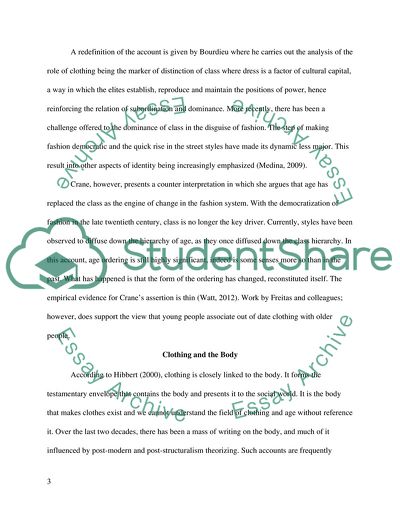Cite this document
(How Fashion Helps Individuals Manage Their Identities Coursework - 1, n.d.)
How Fashion Helps Individuals Manage Their Identities Coursework - 1. https://studentshare.org/culture/1865602-fashionprovides-individuals-with-a-key-means-through-which-to-manage-their-identities-in-the-context-of-everyday-life
How Fashion Helps Individuals Manage Their Identities Coursework - 1. https://studentshare.org/culture/1865602-fashionprovides-individuals-with-a-key-means-through-which-to-manage-their-identities-in-the-context-of-everyday-life
(How Fashion Helps Individuals Manage Their Identities Coursework - 1)
How Fashion Helps Individuals Manage Their Identities Coursework - 1. https://studentshare.org/culture/1865602-fashionprovides-individuals-with-a-key-means-through-which-to-manage-their-identities-in-the-context-of-everyday-life.
How Fashion Helps Individuals Manage Their Identities Coursework - 1. https://studentshare.org/culture/1865602-fashionprovides-individuals-with-a-key-means-through-which-to-manage-their-identities-in-the-context-of-everyday-life.
“How Fashion Helps Individuals Manage Their Identities Coursework - 1”. https://studentshare.org/culture/1865602-fashionprovides-individuals-with-a-key-means-through-which-to-manage-their-identities-in-the-context-of-everyday-life.


